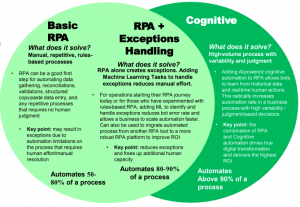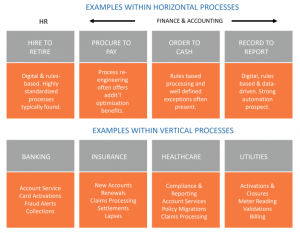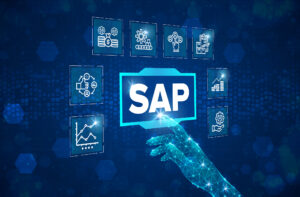Home » Robotic Process Automation: the easiest ROI is in the boring business processes
Robotic Process Automation: the easiest ROI is in the boring business processes
By Vvolve
When we talk about automation and robots, we think of physical robots moving goods, assembling parts or trying to mimic some physical human activity. We seldom think of virtual bots, a Digital Workforce that can perform tedious back-office grunt work more efficiently and accurately than the human workforce. According to some analysts, the easiest ROI for automation is through automating repetitive parts of business processes, and up to 70% of financial processes can be automated through the latest Robotic Process Automation (RPA) techniques.
My own experience with clients shows that these numbers are realistic and can be achieved. Some of the truly transformative benefits that I have seen include:
- For a manufacturing company, shortening the month end financial closing window period from 48 hours to 4 hours
- For a logistics company tracking container movements across multiple locations, shortened the data capture process from 6-8 hours to 5 minutes, and increasing data accuracy to 100%
- Automated order entry and invoice capturing processes from multiple sources (including online, email and hardcopy) and formats that led to 24/7 operations, faster responses and turnaround times, and yet a 2 full-time equivalent (FTE) reduction in staff required
To achieve results though, it is important to understand what RPA is and why it is different from simple scripting of processes and batch processing that we are familiar with. It is also important to identify processes that are most suitable for RPA to get the ROI we expect.
What is RPA?
Robotic Process Automation is software technology or bots that emulate human actions with digital systems. Adding machine learning and artificial intelligence makes the bots “human-likeâ€. While basic RPA that addresses repetitive rules-based processes can automate 50-80% of a process, adding cognitive ability that allows RPA to deal with variability and make judgments can automate more than 90% of a process. This essentially means that a process is entirely digital, and the human workforce only needs to focus on process design and strategic decisions.

Which processes are suitable for RPA?
Business processes that fit the RPA profile are typically repetitive, rules-driven and high volume. Today’s RPA technology can handle processes spanning more than one system, require complex decisions based on algorithms, have both structured and unstructured data inputs, and require interaction with people and amongst digital systems. This means that the use cases and possibilities for automation have vastly expanded from the previous era of simple scripting and batch processing.

While the use cases, possibilities and potential benefits have greatly increased, the implementation journey now also needs to be more thoughtful and carefully planned to capture the ROI we expect. In my next article, I will share more about the RPA journey and how to plan for a successful implementation.
ARCHIVES
- March 2024 (1)
- January 2024 (1)
- October 2023 (4)
- September 2023 (1)
- June 2023 (3)
- May 2023 (5)
- April 2023 (1)
- August 2021 (1)
- July 2021 (1)
- October 2020 (3)
- February 2020 (1)
- December 2019 (1)
- December 2018 (1)
- October 2018 (1)
- September 2018 (1)
- August 2018 (2)
- July 2018 (2)
- March 2018 (1)
- April 2017 (1)
- October 2016 (1)
- September 2016 (2)
- August 2016 (2)
- July 2016 (2)
- June 2016 (1)
- May 2016 (2)
- April 2016 (2)
- March 2016 (2)
Latest Articles
Harness the Power of Cloud ERP
Companies that are taking advantage of the cloud are the ones leading in their field. Their strategic actions often give them a competitive advantage and help them market share by improving customer experiences.
How vVolve & SAP EWM Can Help Your Warehouse Reach Its Full Potential?
Discover how vVolve with SAP EWM can help address challenges in Warehouse Operations which is an important area in supply chain and which requires extensive cross functional cooperation between purchasing, manufacturing, sales, transportation, workforce management departments.
Discover how Application Management Solutions (AMS) can enhance SAP performance and reliability. Explore proactive monitoring, scalability, cost efficiency, improved security, regular updates, enhanced user experience, and business continuity.
SAP HANA On-Premise Migration: Best Practices and Considerations
Explore the best practices and essential considerations for a seamless SAP HANA on-premise to cloud migration. Learn how to assess your current environment, define clear objectives, plan infrastructure, backup data and ensure version compatibility.





